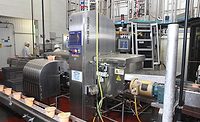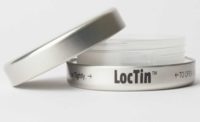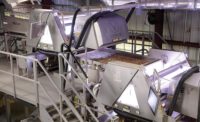Selecting the right inspection and detection equipment for snack and bakery operations
Refinements to inspection and detection equipment boost production safety and quality.

courtesy of Heat and Control

courtesy of Bunting Magnetics

courtesy of Thermo Fisher Scientific

courtesy of Anritsu Infivis Inc

courtesy of Fortress Technology





Greater product variety and increasing consumer attention to quality are among key factors driving snack producers and bakeries to update their inspection and detection equipment with models that, among other features, detect ever-smaller foreign objects and reduce false rejects.
Andrew Blubaugh, product manager, metal detection, Bunting Magnetics, Newton, KS, sees an ongoing trend toward tighter inspection standards that allow companies to achieve compliance and stay competitive. “For X-ray and metal detection, the focus is on finding various hazards for foreign object contamination, as well as smaller particle sizes. For checkweighers, the focus is on tightening variances for weight and inspecting at higher speeds. In all cases, the ability to change from one product to another is important.”
Complementary technologies
For some applications, metal detectors are the ideal choice, but for others, significant benefits can be gained by stepping up to the expanded capabilities offered by X-ray systems, according to Bob Ries, lead product manager, X-ray inspection and metal detection, Thermo Fisher Scientific, Waltham, MA. “With the diversity of product and packaging characteristics in bakery/snack foods, attention must be paid to each application, including whether inspection is taking place before or after packaging, to determine the best technology.”
Ries offers the following examples: Warm, moist, high-salt-content baked goods and snacks, and goods packaged with metallic trays, are more suited to X-ray equipment, because their conductive properties are more likely to interfere with the magnetic field generated by a metal detector.
Frozen baked goods, inert snack foods and products packaged in flexible materials without a metal component, such as folding cartons, perform well with metal detectors. Metal detectors also are a better choice than X-ray for inspecting products that are large, dense or move quickly on the conveyor.
Because X-ray inspection and metal detection find different non-conformances, they are best used in tandem, according to Todd Grube, product manager, inspection systems, Heat and Control Inc., Hayward, CA. “One advantage of using X-ray inspection is its ability to find more than just metal. Also, the performance is not affected by product signal, which is typical with metal detectors. One exception is aluminum, a low-density metal, where a metal detector often will outperform an X-ray machine. Another advantage for metal detection is the lower purchase price and cost of ownership over X-ray inspection.”
The price differential between metal detectors and X-ray systems increases incrementally according to the size of the aperture. For smaller units, the difference in upfront cost may not be a deal breaker if investing in X-ray, but it may become insurmountable if a bigger system is required, according to Phil Brown, managing director, Fortress Technology, Oxfordshire, England. “Energy consumption contributes to ongoing costs. The difference depends on whether or not the X-ray system requires cooling units, such as fans or air conditioners, which drive up energy consumption.”
More X-ray machines going on the line because retailers are becoming more sensitive to product inspection methods when it comes to the brands they stock, according to Christy Draus, marketing manager, Eagle Product Inspection, Tampa, FL. “Many are demanding X-ray product inspection as a minimum requirement to protect their brands. This means that the use of X-ray inspection is necessary to secure contracts with certain retailers.”
Chris Young, business development manager, Anritsu Infivis Inc., Elk Grove Village, IL, sees increased demand for food quality and safety as the public becomes more aware of these issues via social media. “Also, many bakery/snack producers are using metalized films and foils for longer shelf life, prompting increased usage of X-ray inspection.” To that end, the company recently introduced the entry-level XR74e X-ray line to help companies transition from metal detection to X-ray inspection.
Product density can make contaminant detection more challenging. “In these instances, we recommend the use of our Material Discrimination X-Ray technology, which lends itself to inspecting ‘difficult’ or ‘busy’ images that contain varied density distribution,” Draus says.
Continued innovations
Many new inspection and detection systems incorporate remote monitoring and adjustment. For example, Mettler Toledo Product Inspection, Tampa, FL, has upgraded its gravity-flow metal detection equipment, which inspects powdered and granular products flowing from storage areas to mixing areas. The units can be monitored and adjusted remotely, improving safety for personnel and limiting downtime.
Thermo Fisher Scientific has introduced the Thermo Scientific Sentinel 5000 multi-scan metal detector, which scans up to five frequencies at a time, allowing food processors to identify ferrous, non-ferrous and stainless steel contaminants. Multiscan technology allows users to find contaminants that may be overlooked when products are scanned on a single frequency. The Sentinel also identifies contaminants that are 70 percent smaller than previous technologies.
“It reduces ‘product effect,’ where the signal from a particular type of metal can be hidden inside the electromagnetic response of the product or packaging. This benefits the inspection of warm bread with a high salt content, for example, which tends to have high product effect,” Ries explains.
The Ishida IX-G2 X-ray system from Heat and Control employs dual-energy sensors for detection of low-density and thin foreign objects. Comparing images from two X-ray energy levels, the IX-G2 analyzes the absorption of X-rays to accurately detect foreign objects by density and material type. This process improves detection of low-density objects, such as thin pieces of metal, glass, shell, bone and rubber in overlapping products, and those with irregular surfaces.
Fortress Technology has developed a multi-lane metal detection system that is designed to reduce its footprint and operating costs. Featuring a single metal detector mounted across multiple conveyor lines, the unit is divided into individual apertures. Because each lane has a dedicated aperture, the range is more sensitive to smaller metal particles, detecting all metal types down to 0.7 mm ferrous, 0.7 mm non-ferrous and 1.4 mm stainless steel. “On five conveyors, users can save up to 50 percent of the space required by individual metal detectors, 17 percent of installation cost and 65 percent of total cost of ownership,” Brown says.
Loma Systems, an ITW Company, Farnborough, England, recently introduced the X5c (compact) X-ray inspection unit, which is designed to meet growing demand for a cost-effective X-ray solution. The X5c is designed for companies running multi-product, retail-ready lines that want to switch to X-ray inspection.
Able to detect glass, bone, rubber, stone as well as ferrous, non-ferrous and stainless steel metal in various types of packaging, the X5c operates at line speeds up to 50 meters per minute. It is capable of handling products up to 100 mm high and 300 mm wide. Also, the system offers a self-contained X-ray generator and a cooling mechanism for long tank life.
Mettler Toledo recently unveiled the C-Series of checkweighers, which are designed to optimize flexibility in packaging operations. One of three product lines, the turnkey C31 handles packages weighing up to 6 kg, with a throughput rate of 200 units per minute. It can be combined with metal detectors to provide checkweighing and foreign body detection in one compact system.
More operations are investing in digital sorters to inspect incoming ingredients such as nuts and dried fruit that have a risk of containing shells and other foreign materials. Even when these products have been sorted by the supplier, re-sorting them in-house boosts safety and quality, notes Marco Azzaretti, advanced inspection systems product manager, Key Technology, Walla Walla, WA.
“The latest digital sorters feature cameras and laser sensors that offer twice the resolution of previous generations to detect smaller foreign material and product defects,” he says. The sorters use multi-sensor Pixel Fusion, which combines pixel-level input from multiple cameras and laser sensors to differentiate good product from difficult-to-detect defects and foreign materials.
This article was originally posted on www.snackandbakery.com.
Looking for a reprint of this article?
From high-res PDFs to custom plaques, order your copy today!










